Web application development refers to the process of creating dynamic applications that run on web browsers rather than being installed on a device. These applications offer a wide range of functionalities, from e-commerce platforms to social media networks and productivity tools, making them essential for businesses and organizations to reach their audience and provide services in a fast, scalable, and accessible manner.
Key Benefits of Web Application Development
- Cross-Platform Accessibility One of the primary advantages of web applications is that they can be accessed from any device with an internet connection and a web browser, regardless of the operating system (Windows, macOS, Linux). This makes them more versatile than desktop applications, which often require platform-specific development.
- Easy Updates and Maintenance Since web applications are hosted on servers, updates and patches can be applied centrally. This means users don’t need to download or install updates manually, ensuring that all users always have access to the latest version of the app without downtime.
- Cost-Effective Developing a web application is often more cost-effective than building multiple native apps for different platforms (iOS, Android, etc.). With a single codebase, businesses can serve all users, whether on desktop or mobile.
- Scalability Web applications can scale easily to accommodate increasing users, data, and traffic. As your business grows, web apps can be updated and expanded with minimal disruptions to users, making them a flexible option for future growth.
- Real-Time Data Access Web applications enable users to access real-time data and updates. This is crucial for applications like social media platforms, collaborative tools, or online banking, where data needs to be instantly updated and synchronized across devices.
- Security Web applications can leverage server-side security measures, such as firewalls, encryption, and authentication, to ensure data protection. With modern technologies, web apps can be just as secure as desktop apps, with regular security patches applied to protect against emerging threats.
- Integration Capabilities Web applications can easily integrate with third-party services, APIs, and databases, enabling businesses to extend functionality and connect to other platforms. For example, you can integrate payment gateways, social media sharing, and cloud storage into your web application.
Types of Web Applications
- Static Web Applications Static web applications are simple websites that display fixed content to users. They are easy to develop and are ideal for informational websites, portfolios, or landing pages. However, they lack interactivity and are not suitable for dynamic content.
- Dynamic Web ApplicationsDynamic web applications are more complex and interactive. They pull data from a database and update content in real-time. These applications can provide a personalized experience, making them ideal for e-commerce platforms, content management systems (CMS), and social media networks.
- Single-Page Applications (SPA) SPAs load a single HTML page and dynamically update as the user interacts with the app. Instead of reloading the entire page, only the necessary content is refreshed. This makes SPAs faster and more responsive. Frameworks like React, Angular, and Vue.js are popular choices for building SPAs.
- Progressive Web Applications (PWA) PWAs combine the best of web and mobile applications. They are built with standard web technologies but offer offline capabilities, push notifications, and faster load times, providing an app-like experience directly in the browser.
- Multi-Page Applications (MPA) Unlike SPAs, MPAs load different pages from the server with each user interaction. While MPAs can be more complex to develop and manage, they are ideal for large-scale websites with multiple sections, such as e-commerce stores and news sites.
The Web Application Development Process
- Requirement Analysis and Planning The first phase involves understanding the client’s needs, goals, target audience, and key features for the web application. Detailed planning helps to determine the project scope, timeline, and budget, ensuring the project aligns with business objectives.
- UI/UX Design In this phase, the design team focuses on creating an intuitive, user-friendly interface. This includes wireframing and prototyping the layout and functionality of the web app. The goal is to ensure a smooth user experience (UX) while keeping the design visually appealing (UI).
- Frontend Development Frontend development involves building the parts of the web application that users interact with. Using HTML, CSS, JavaScript, and frameworks like React.js, Angular, or Vue.js, frontend developers create responsive and dynamic user interfaces.
- Backend Development Backend development deals with the server-side logic, database management, and application functionality. Technologies like Node.js, Python (Django, Flask), Ruby on Rails, or PHP (Laravel) are commonly used for building the backend, while databases like MySQL, MongoDB, or PostgreSQL store the data.
- API Development and Integration APIs (Application Programming Interfaces) are used to enable communication between the frontend and backend. Developers can integrate third-party services such as payment gateways, email marketing tools, and analytics platforms to extend the web application’s functionality.
- Testing Rigorous testing is done to ensure the web application performs well across different browsers and devices. This includes functional testing, performance testing, security testing, usability testing, and user acceptance testing (UAT) to catch any bugs or performance issues before launch.
- Deployment Once the web application is developed and tested, it is deployed to a web server, making it accessible to users. Cloud platforms like AWS, Azure, or Google Cloud are often used for hosting the web app, ensuring high availability and scalability.
- Maintenance and Support Post-launch, the web application requires ongoing maintenance to ensure it remains secure, performs optimally, and continues to meet the business’s needs. This includes bug fixes, feature updates, and server management.
Technologies Used in Web Application Development
- Frontend Technologies: HTML5, CSS3, JavaScript, jQuery, React.js, Angular, Vue.js, SASS/LESS
- Backend Technologies: Node.js, Django, Ruby on Rails, PHP (Laravel, Symfony), Python (Flask, FastAPI)
- Databases: MySQL, PostgreSQL, MongoDB, Firebase
- Web Servers: Apache, Nginx, Microsoft IIS
- API Integration: RESTful APIs, GraphQL, WebSockets
- Version Control: Git, GitHub, GitLab, Bitbucket
Conclusion
Web application development offers businesses the ability to create flexible, scalable, and interactive platforms that are accessible across devices. Whether you need a simple informational website or a complex web app with real-time data, the web offers endless possibilities for engaging users and delivering value. By selecting the right technologies and following a structured development process, businesses can create powerful web applications that drive growth and enhance customer experience.



